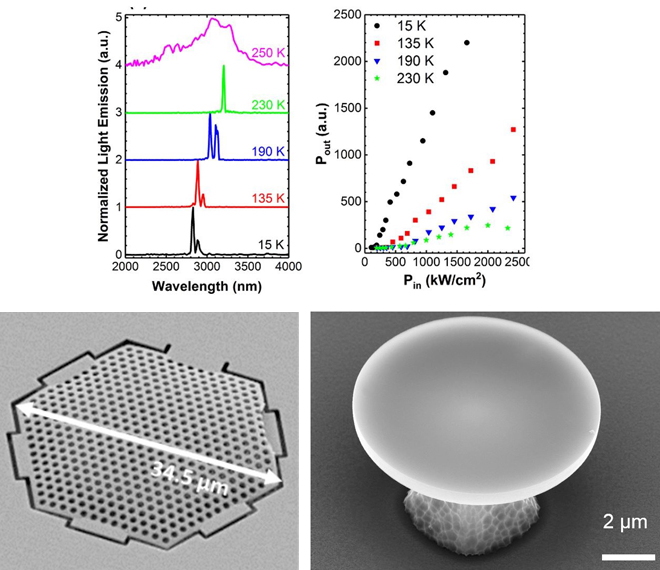Light sources fully integrated into microelectronics technology are the missing stones of silicon photonics. Silicon, as well as germanium, are not well suited for light emission in their natural form, due to the indirect nature of their bandgap. However, theoretical studies predict that a germanium-tin alloy (GeSn) makes it possible to transform the electronic band structure into a direct bandgap for compositions greater than 8% tin.
Researchers at our institute have demonstrated, by optical pumping, the laser emission regime of optical cavities composed of GeSn alloy in the shape of micro-disk and photonic crystal. The material has a direct gap and optical gain in the mid-infrared range of 2.7 μm to 3.2 μm. They have observed laser emission up to a record temperature of 230 K.
They currently develop GeSn membranes with elastic deformations of the crystalline parameter. By playing with the magnitude of the strain and with the alloy composition, it will be possible to tune the emission wavelength in the mid-infrared range. This combination opens also a promising route toward lasing of GeSn at 300K and beyond, toward the development of monolithic GeSn laser sources on silicon chips.
Collaboration: CEA/DRT/LETI; Paul Scherrer Institut (Switzerland).
This project was supported by the Phare CEA project "Photonique", and by the project ANR ELEGANTE.

GeSn alloy microdisk and photonic crystal lasers (disk diameter: 10 µm, crystal photonic periodicity: 1.4µm, hole diameter: 0.9µm ). Laser emission spectra and Power-Out
versus Power-In curves of the microdisk at different temperatures (from 15K to 230K).